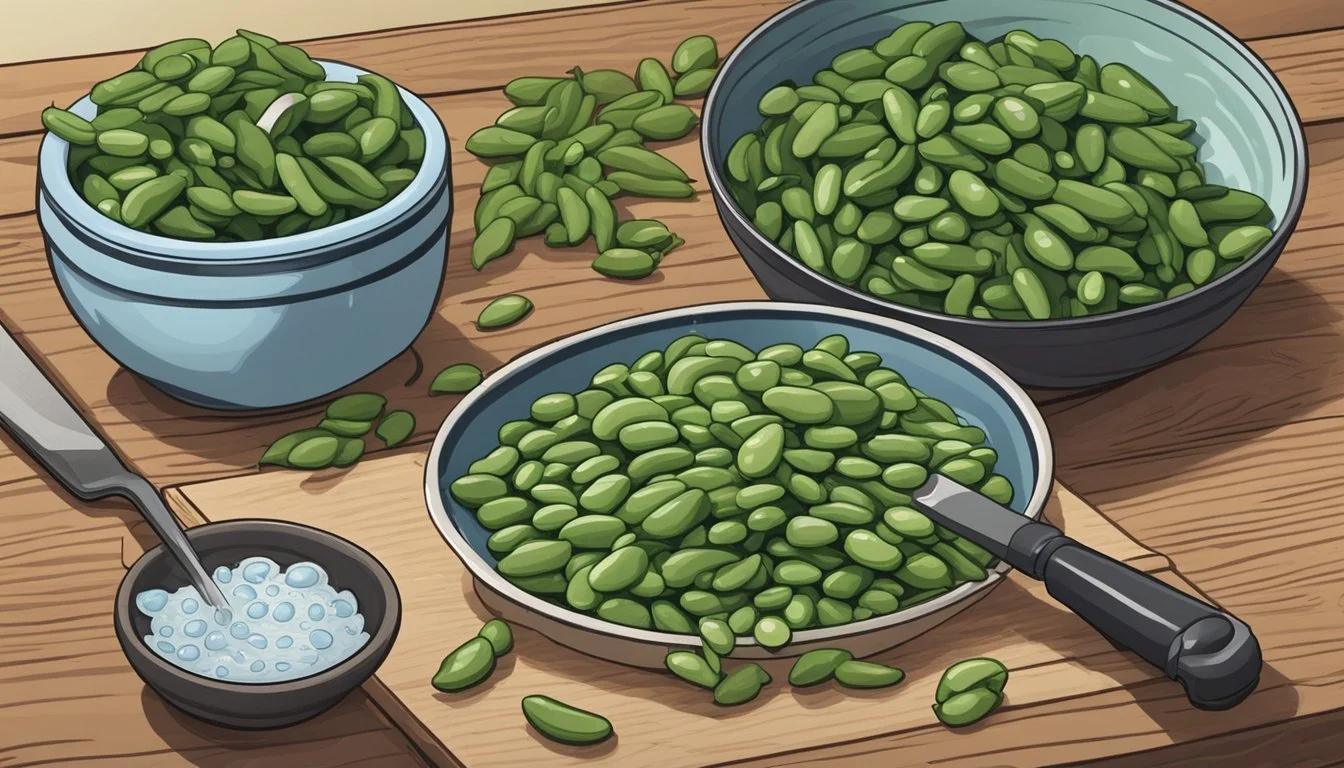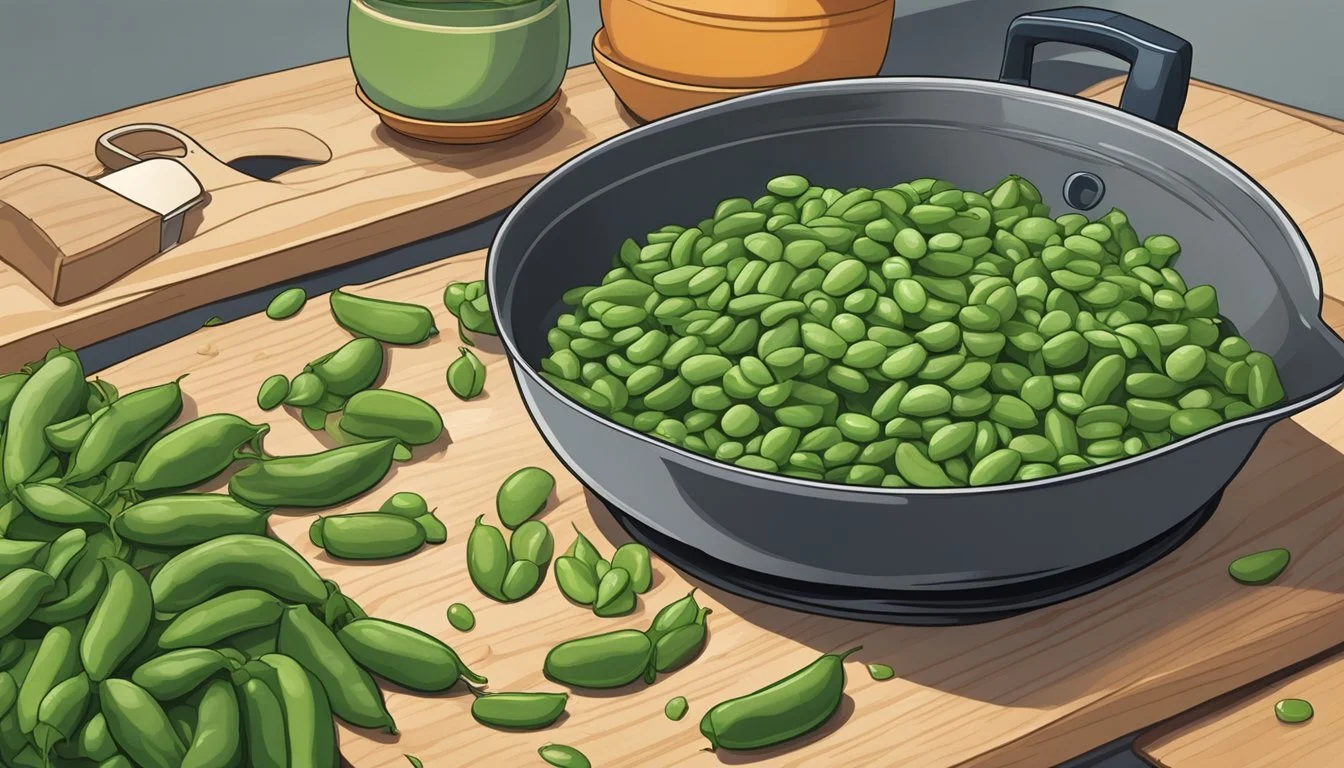Romano Beans Substitutes
Top Alternatives for Recipes
When it comes to finding suitable substitutes for Romano beans, the options are plentiful and each offers unique advantages in terms of flavor, texture, and nutritional value. Cannellini beans are an excellent substitute, providing a similarly creamy texture and mild taste that works well in many recipes. They are especially useful in Italian dishes and offer a good balance of protein and fiber.
Another versatile option is black beans. With their hearty texture and robust flavor, black beans can easily replace Romano beans in soups, stews, and even salads. Nutritionally, they offer similar benefits with high protein and fiber content, making them a healthy alternative.
For those looking for something a bit different, chickpeas can also serve as a Romano bean substitute. Though their texture is slightly firmer, chickpeas hold up well in various cooking methods, from roasting to braising. They are a great addition to recipes requiring a substantial bean and bring a delicious nutty flavor to the dish.
Understanding Romano Beans
Romano beans, known for their flat shape and nutty flavor, are a staple in many culinary traditions. They offer a variety of textures and nutrients that make them versatile in numerous dishes.
Characteristics of Romano Beans
Romano beans, sometimes called Italian flat beans, are distinctive for their wide, flattened pods. They can appear in shades of green, yellow, or purple. Once cooked, they have a tender yet crisp texture and a pleasantly nutty flavor. This profile makes them stand out from other beans, such as pinto beans, which are rounder and earthier in taste.
Romano beans are often associated with Mediterranean cuisine, particularly Italian dishes. Their structure is ideal for grilling, sautéing, or steaming. They maintain their texture well, making them a popular choice in a variety of recipes.
Nutritional Profile
Romano beans are nutritious, offering a wealth of vitamins and minerals. They are a significant source of protein and dietary fiber, contributing to a balanced diet. Additionally, they provide essential nutrients like iron, calcium, and vitamins A and C.
A serving of Romano beans is relatively low in calories, making them a healthy addition to any meal. Their high fiber content supports digestive health. Meanwhile, the presence of iron and calcium supports bone health and energy levels. The overall nutritional benefits make Romano beans a valuable ingredient in both main dishes and sides.
Culinary Uses
Romano beans shine in a variety of culinary applications. They can be enjoyed in salads, soups, and as a side dish. Their sturdy texture allows them to hold up well in slow-cooked dishes and robust salads. Due to their hearty nature, they are perfect for grilling and roasting, which enhances their natural flavor.
In Italian cuisine, they are often featured in pasta dishes and minestrone soup. They pair well with flavors like garlic, olive oil, and lemon. The versatility of Romano beans means they can be adapted to fit many different types of recipes, offering both flavor and nutritional benefits.
Primary Substitutes for Romano Beans
Romano beans are cherished for their nutty flavor and firm texture. If they are unavailable, three viable substitutes offer similar characteristics, making them suitable for various dishes.
Green Beans
Green beans are a popular substitute for fresh Romano beans. Green beans possess a crisp texture when cooked and provide a fresh, slightly sweet flavor.
For cooking, they can be boiled, steamed, or blanched. These methods ensure the beans retain their bright green color and crunchy texture, making them ideal for salads and stir-fries. Nutritionally, green beans are rich in vitamins A and C, making them a healthy addition to any meal. Swapping green beans for fresh Romano beans works particularly well in dishes requiring a crunchy, vegetal component.
Snap Peas
Snap peas, known for their edible pods, offer a unique crunch and mildly sweet flavor. Sugar snap peas are an excellent choice for recipes calling for fresh Romano beans. Their bright green color and crisp texture add visual appeal and a pleasant bite.
When cooking snap peas, light steaming or boiling for a few minutes enhances their texture without sacrificing their natural sweetness. They are perfect in salads, stir-fries, and as a fresh side dish. Nutritionally, snap peas provide a good source of vitamin C, fiber, and protein. Their versatility and nutritional benefits make them a robust substitute for Romano beans.
Pinto Beans
Pinto beans are a suitable alternative, particularly for dried Romano beans. They share a creamy texture and a mild, earthy flavor once cooked, making them ideal for stews, soups, and baked dishes. Pinto beans are often used in baked beans and stewing, retaining a pleasant texture and absorbing flavors well.
When using dried pinto beans, they require soaking before cooking to achieve the desired softness. Nutritionally, pinto beans are an excellent source of protein, fiber, and essential minerals like iron and magnesium. They are not only similar in texture to Romano beans but also provide a comparable nutritional profile, making them a practical swap in many recipes needing dried beans.
Secondary Substitutes for Romano Beans
When looking for alternatives to Romano beans, Kidney beans, Black beans, and Lima beans are excellent secondary substitutes. Each of these beans has unique properties that can complement various dishes, adding specific flavors and textures that can enhance your recipes.
Kidney Beans
Kidney beans are a versatile substitute for Romano beans. Known for their savory and nutty flavor, they are commonly used in soups, stews, and salads. These beans are rich in protein and fiber, which makes them a healthy option.
They hold their shape well when cooked, making them a great choice for dishes that require a bean that doesn't easily break down. Kidney beans pair well with various spices and herbs, adding depth to your meals.
Black Beans
Black beans, with their earthy flavor and creamy texture, offer a distinct alternative to Romano beans. Often used in Latin American cuisine, these beans are ideal for chili, soups, and side dishes. They are packed with protein and fiber, contributing to a balanced diet.
Their dark color can add a visually appealing contrast to lighter ingredients in salads and casseroles. Black beans are also known for absorbing flavors from seasonings and other ingredients well.
Lima Beans
Lima beans, also known as butter beans, have a creamy texture that makes them a suitable substitute for Romano beans, especially in succotash, stews, and soups. They have a mild flavor that can adapt to various ingredients and seasonings.
These beans are a good source of protein and fiber, and their creamy consistency can enhance a dish's richness. Lima beans are particularly favored for their ability to blend seamlessly into recipes, making them versatile in both main and side dishes.
Substitute Considerations
Selecting the right substitute for Romano beans involves analyzing flavor compatibility, texture considerations, and nutritional adjustments. These factors will help ensure that the substitute performs well in various recipes while maintaining desired culinary qualities.
Flavor Compatibility
Flavor is a crucial factor when choosing a substitute for Romano beans. Romano beans have a slightly sweet, earthy flavor that pairs well with garlic, olive oil, lemon juice, salt, and pepper. When selecting a substitute, consider options like green beans or wax beans, which offer similar mild flavors.
Incorporating herbs like parsley or thyme can enhance the flavor profile. When substituting, it's important to balance the flavors with herbs and spices that complement the other ingredients in the dish.
Texture Considerations
The texture of Romano beans is another essential aspect. They are slightly firm yet tender when cooked, making them versatile for various cooking methods like boiling, braising, or steaming. Substitutes should mimic this texture closely.
Green beans and wax beans are excellent options due to their similar firm yet tender texture. Ensuring the right texture will help maintain the dish's integrity and provide a satisfying bite. Adjust cooking times if necessary to achieve the desired tenderness.
Nutritional Adjustments
Romano beans are rich in dietary fiber, protein, iron, and calcium, making them nutritious options for any dish. When replacing them, consider the nutritional profile of the substitutes. Green beans and snap peas are good alternatives but may vary in their nutrient content.
To maintain nutritional balance, pair the substitutes with foods high in protein and fiber, such as quinoa or brown rice. Including ingredients like olive oil and leafy greens can boost the dish's nutritional value, ensuring a balanced meal that supports weight loss and overall health. Ensure that any substitute supports dietary goals and nutritional needs effectively.
Preparation Techniques for Substitutes
Preparation techniques vary based on the type of substitute being used. Different methods such as cooking dried beans, blanching and boiling, and sautéing or roasting ensure that substitutes closely mimic the texture and flavor of Romano beans.
Cooking Dried Beans
Cooking dried beans involves soaking and simmering them to achieve the right consistency. Begin by soaking the beans in water overnight, which helps reduce cooking time and improves texture.
After soaking, drain and rinse the beans. Transfer them to a large pot and cover with fresh water. Bring the water to a gentle boil, then reduce the heat and simmer until tender. This process can take 1-3 hours depending on the bean variety. For added flavor, consider stewing or braising the beans with garlic and herbs.
Blanching and Boiling
Blanching and boiling green beans or wax beans can be an effective preparation method. Start by washing and trimming the beans. Bring a large pot of salted water to a boil, then add the beans.
Cook the beans for 7-9 minutes until they become bright green and tender. To stop the cooking process and maintain texture, immediately plunge the beans into a bowl of ice water. After blanching, the beans can be added to salads or sautéed with olive oil and garlic for added flavor.
Sautéing and Roasting
Sautéing and roasting are great techniques for adding depth of flavor. To sauté beans, heat olive oil in a pan over medium heat. Add the beans along with minced garlic and cook until tender, usually around 5-7 minutes. Stir occasionally to prevent burning.
Roasting beans involves preheating the oven to 425°F (220°C). Toss the beans with olive oil, salt, and herbs. Spread them evenly on a baking sheet and roast for 15-20 minutes until crisp and golden brown. This method brings out a nutty flavor and crisp texture, making the beans a perfect side dish or addition to salads.







